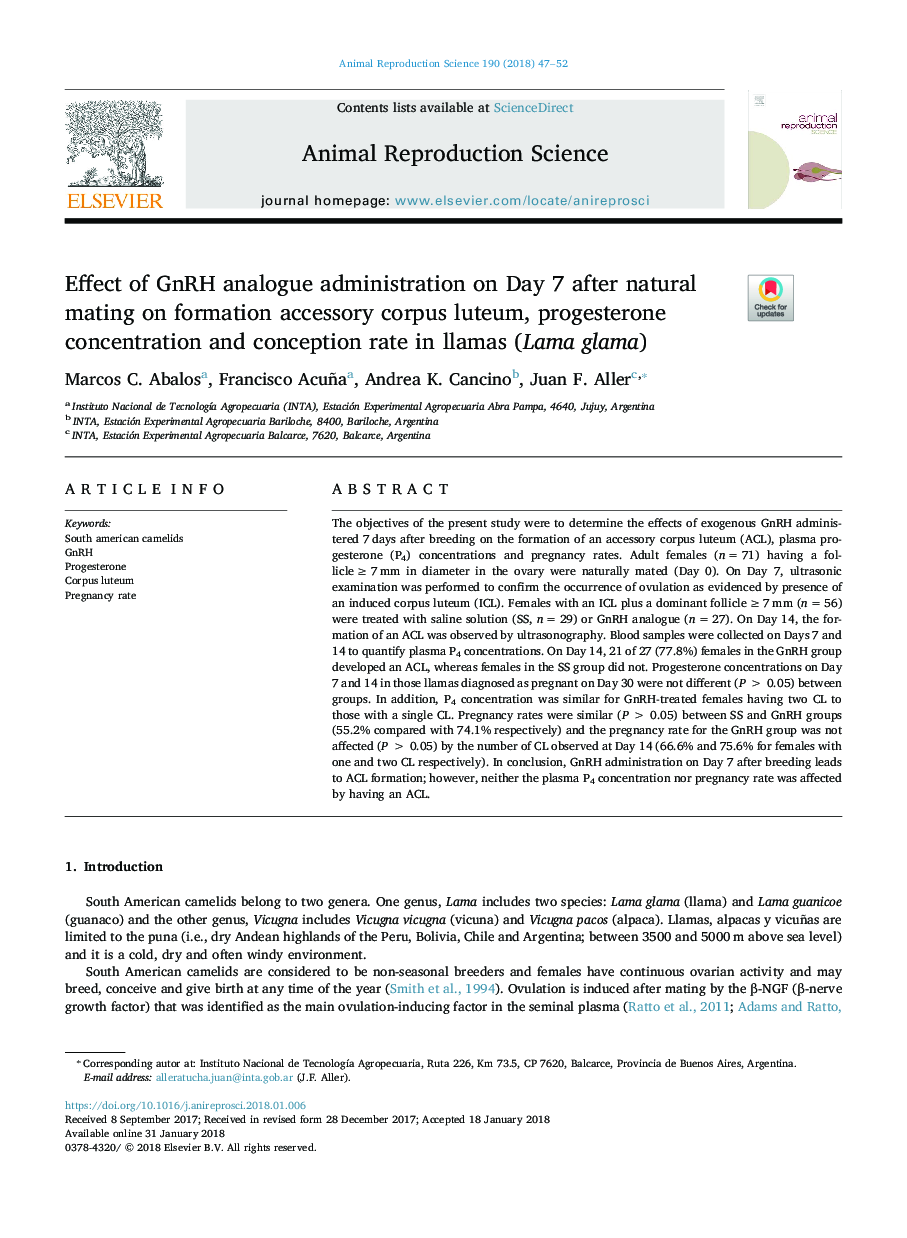| Article ID | Journal | Published Year | Pages | File Type |
|---|---|---|---|---|
| 8403971 | Animal Reproduction Science | 2018 | 6 Pages |
Abstract
The objectives of the present study were to determine the effects of exogenous GnRH administered 7â¯days after breeding on the formation of an accessory corpus luteum (ACL), plasma progesterone (P4) concentrations and pregnancy rates. Adult females (nâ¯=â¯71) having a follicleâ¯â¥â¯7â¯mm in diameter in the ovary were naturally mated (Day 0). On Day 7, ultrasonic examination was performed to confirm the occurrence of ovulation as evidenced by presence of an induced corpus luteum (ICL). Females with an ICL plus a dominant follicleâ¯â¥â¯7â¯mm (nâ¯=â¯56) were treated with saline solution (SS, nâ¯=â¯29) or GnRH analogue (nâ¯=â¯27). On Day 14, the formation of an ACL was observed by ultrasonography. Blood samples were collected on Days 7 and 14 to quantify plasma P4 concentrations. On Day 14, 21 of 27 (77.8%) females in the GnRH group developed an ACL, whereas females in the SS group did not. Progesterone concentrations on Day 7 and 14 in those llamas diagnosed as pregnant on Day 30 were not different (Pâ¯>â¯0.05) between groups. In addition, P4 concentration was similar for GnRH-treated females having two CL to those with a single CL. Pregnancy rates were similar (Pâ¯>â¯0.05) between SS and GnRH groups (55.2% compared with 74.1% respectively) and the pregnancy rate for the GnRH group was not affected (Pâ¯>â¯0.05) by the number of CL observed at Day 14 (66.6% and 75.6% for females with one and two CL respectively). In conclusion, GnRH administration on Day 7 after breeding leads to ACL formation; however, neither the plasma P4 concentration nor pregnancy rate was affected by having an ACL.
Related Topics
Life Sciences
Agricultural and Biological Sciences
Animal Science and Zoology
Authors
Marcos C. Abalos, Francisco Acuña, Andrea K. Cancino, Juan F. Aller,
